Come winter, your local muskrats are racking up dozens of push-ups on the ice. I’m not referring to some kind of rodent boot camp, but clumps of vegetation that these semi-aquatic mammals push up through the airholes they gnaw through the ice to keep them open.
A “push-up” to a muskrat is a place where they can catch a breath while foraging underwater for their next meal. When the ice melts in the spring, these clumps of plant matter float on top of the water like odd little islands.
Often overshadowed by beavers and otters, the muskrat is actually an interesting and fun-to-observe mammal found coast to coast in North America.
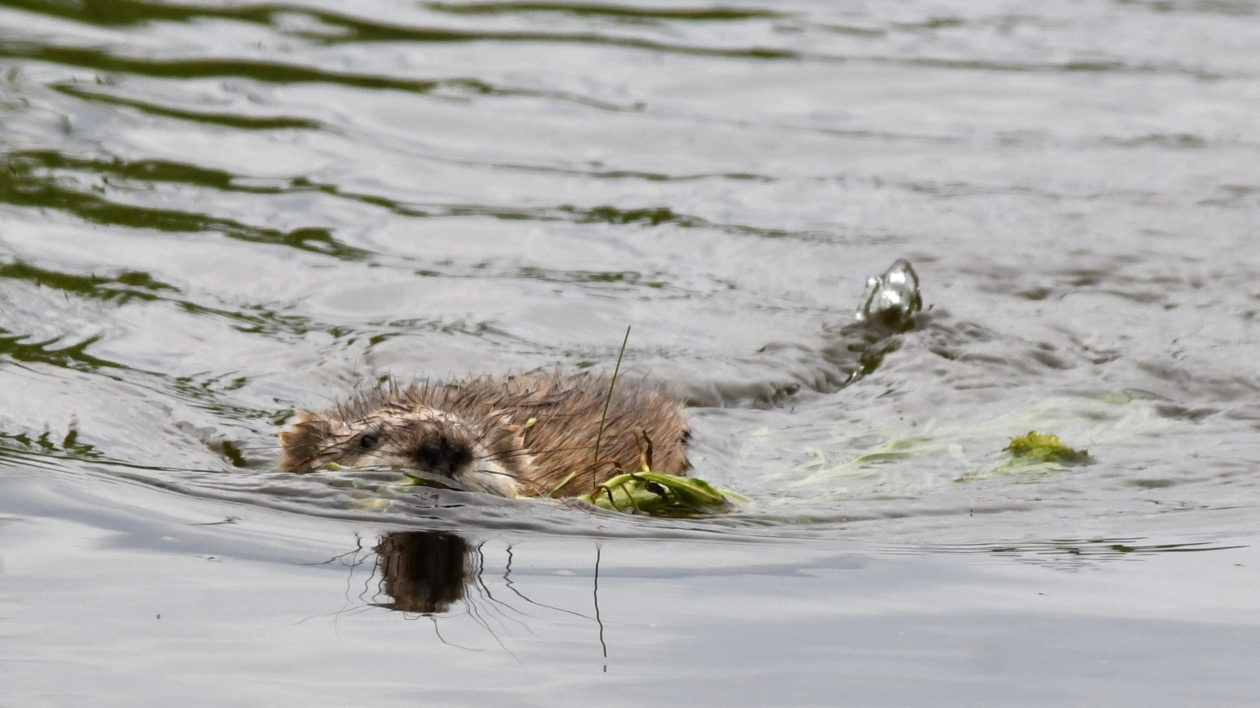
It’s Not a Beaver
When someone sees a muskrat swimming through the marsh, the first thought is often that it’s a beaver. Look again.
Muskrats are often mistaken for beavers. Both are brown and furry and strong swimmers. They live in same watery habitats and busily harvest the flora under the water and along the shoreline. They are also both rodents, though only distantly related. The closest relatives to muskrats are voles and lemmings, and the populations of all three species similarly cycle up and down every decade or so.
The easiest way to tell a muskrat from a beaver is by its overall size and the shape of its tail. A tubby muskrat at four pounds is a midget compared to a 45-pound beaver. A muskrat also has a relatively furless, scaly tail compared to a beaver’s broad, flat tail. A muskrat’s tail is slightly flat on the vertical sides, though not much. It uses its tail for propulsion in the water, and it never slaps it.
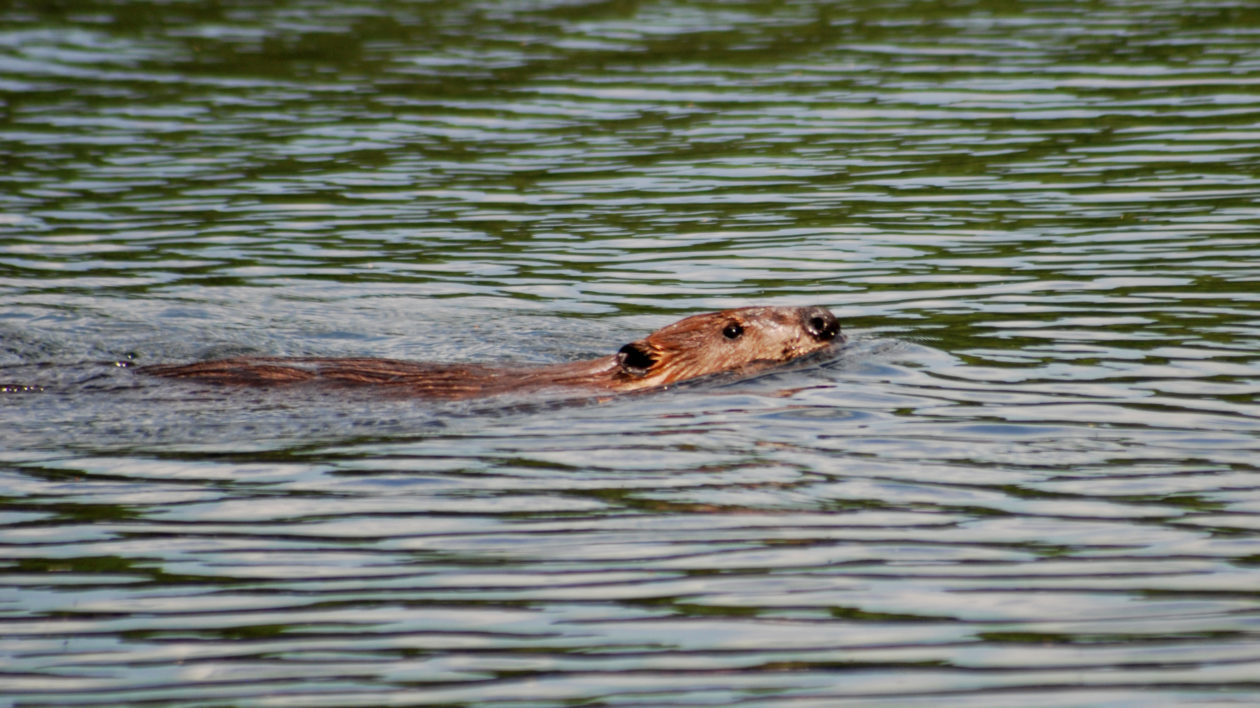
When it waddles ashore, it simply drags its tail across the ground or snow. If you see tracks near a shoreline with a distinct line between the left and right pawprints, they were probably left by a muskrat.
What’s more, muskrats don’t fell trees. They harvest cattails, submerged roots and grasses, and reeds which they eat and use to build their push-ups and lodges. Waterlilies are muskrat candy.
Muskrats don’t cache food for the winter like a beaver so they must find fresh aquatic plants every day under the ice, though they’ll occasionally snack on small fish, clams, snails and turtles, too.
In addition to push-ups, some muskrats build lodges for protection from predators and for shelter during the winter. Similar to beaver lodges, the entrance is from below, underwater, however their dens are not made of trees and branches, but of reeds, cattails, other stalks and mud. Not all muskrats make lodges. They’re just as happy (and as likely) to burrow into a riverbank if they can.
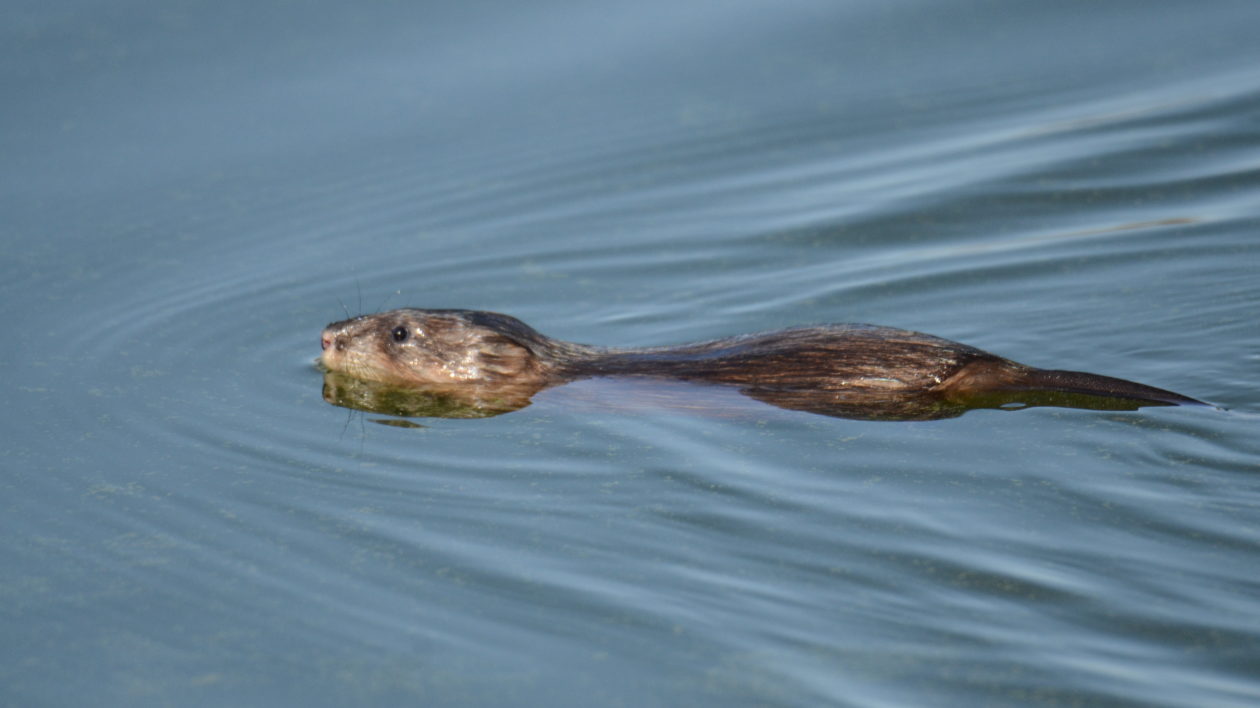
Putting the Musk in Muskrat
I often come across muskrats while fishing around reed beds. One time, while wade-fishing in the Adirondacks in upstate New York, one particularly bold muskrat tried to swim between my legs. I nearly dropped my rod. The wet furball stank! Actually, I smelled it before I saw it emerge from a tangle of cattails behind me.
Muskrats earned their name thanks to their musky scent, but their odor is not emitted in defense like a skunk’s. It’s how they mark territory and to “talk” to the opposite sex, though at that moment, I really didn’t care why it smelled. Thankfully, as I tried to step away, it dove. When the air cleared, I was grateful for the chance to see it so close, but where did it go?
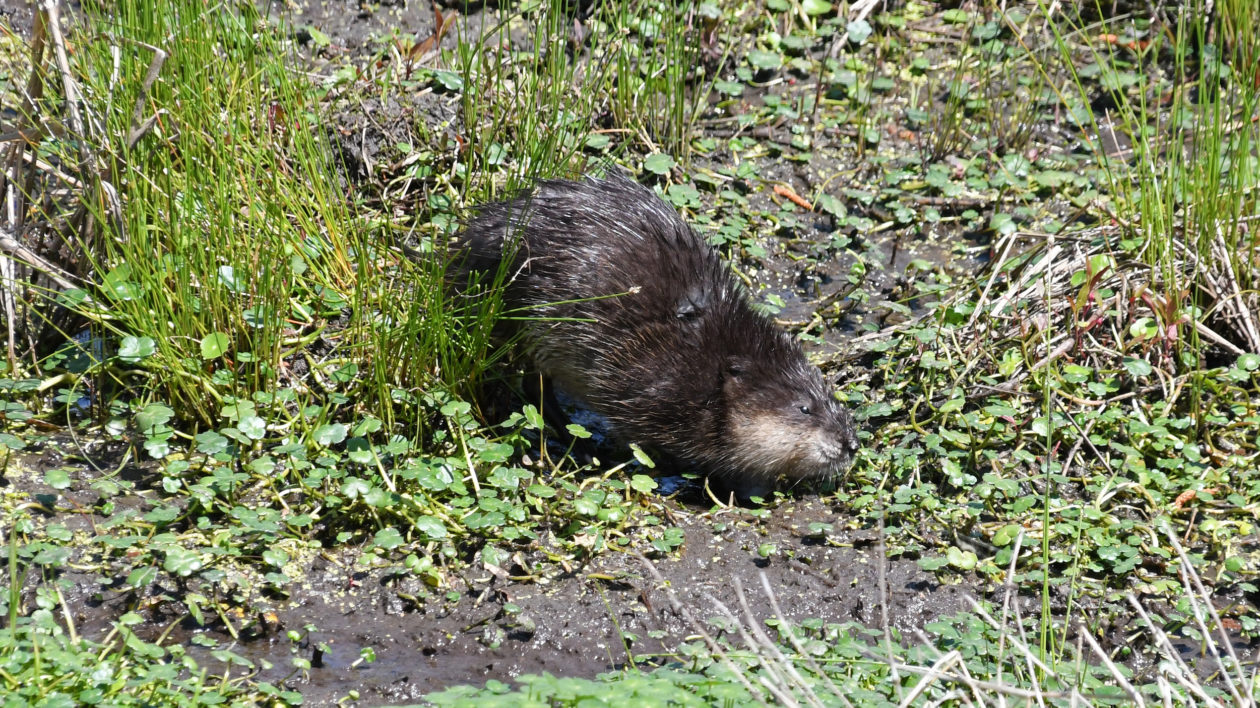
I scanned the reeds for the little fellow. No luck. After about 10 minutes, my attention waned, and I turned to cast again. Just as my line settled on the water, the muskrat reappeared. Impressed by how long it had held its breath, I did a little research. As it turns out, carbon dioxide does not build up as quickly in a muskrat’s body as in most mammals. Like seals and whales, they can stay submerged for long periods of time, up to 17 minutes in the case of a muskrat. Plus, their ears, which are hidden in their thick, double layer of fur, close up to keep water out.
While muskrat populations ebb and flow in a natural cycle, it would seem the species should be susceptible to an overall decrease given how wetlands have declined in quality and quantity across the continent, but muskrats have proven to be a rather durable species. They take up residence in constructed canals when natural waterways dry up, and they can tolerate certain pollutants that kill fish and frogs.
They reproduce prolifically, too. Muskrats raise up the three litters per year with up to 10 babies per litter. The young mature quickly. In just a month, the mother muskrat kicks her kids out to fend for themselves. That is, unless it’s the last litter of the summer. That bunch gets to spend the winter with mom and dad. They all huddle together inside their lodge to keep each other warmer.
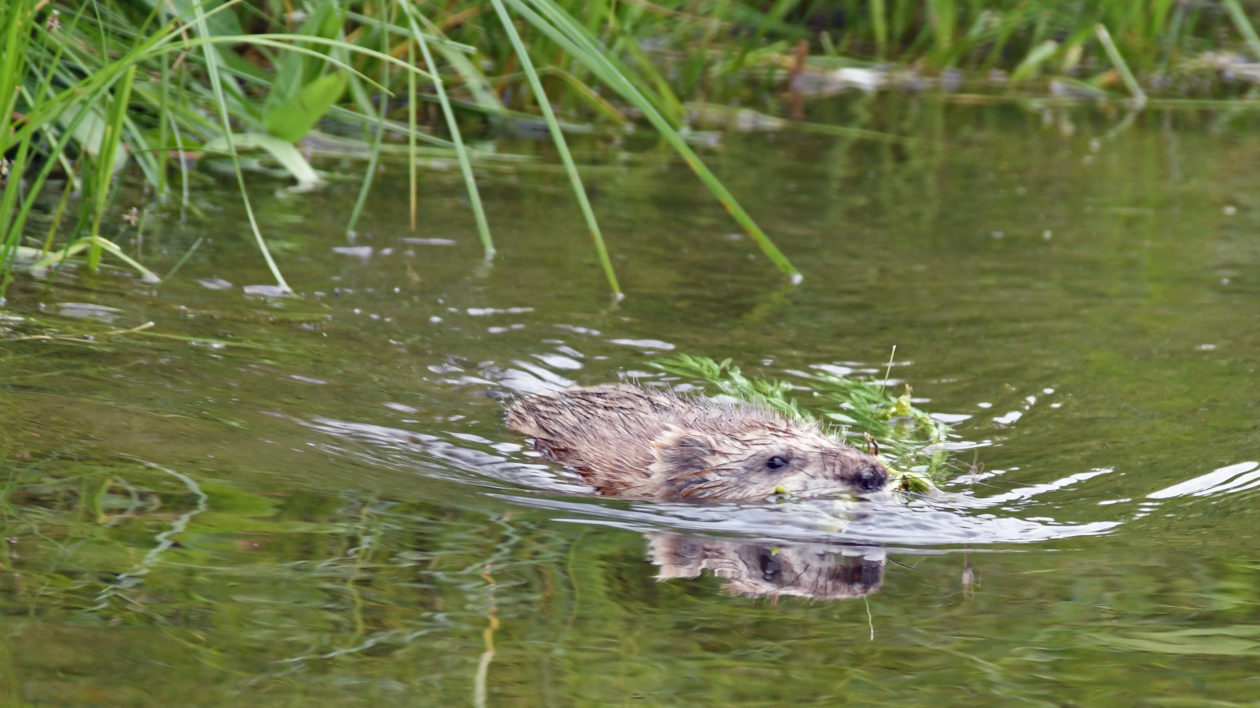
Muskrats versus Other Wildlife
During the summer, muskrats construct platforms out of vegetation which birds use as dry places to eat. When the muskrat dives after more food, a bird might use its feeding platform as a perch.
One time while photographing birds in a marsh in the Northern Rockies, I discovered one of these platforms because a heron stood on it. The heron flushed when it saw me, but the muskrat soon returned with a mouthful of freshly foraged greens. It gave me a wary look with its small dark eyes, decided I wasn’t a threat, then calmly chomped its lunch. How ironic that this heron and muskrat got along, given that herons occasionally feed on baby muskrats!
The list of muskrat predators is long, including mink, fox, mountain lions, raccoons, bears, wolverines, eagles, owls and hawks.
Muskrats are also edible by people, but in recent times humans have pursued muskrats mainly for their fur. has been on their fur. Their dense fur was also coveted for its warmth until the early 1900s. A coat trimmed with “Hudson sealskin” was really adorned with muskrat fur dyed to look like seal. But for me, I just enjoy watching them swim with a mouthful of reeds as they go about their business.
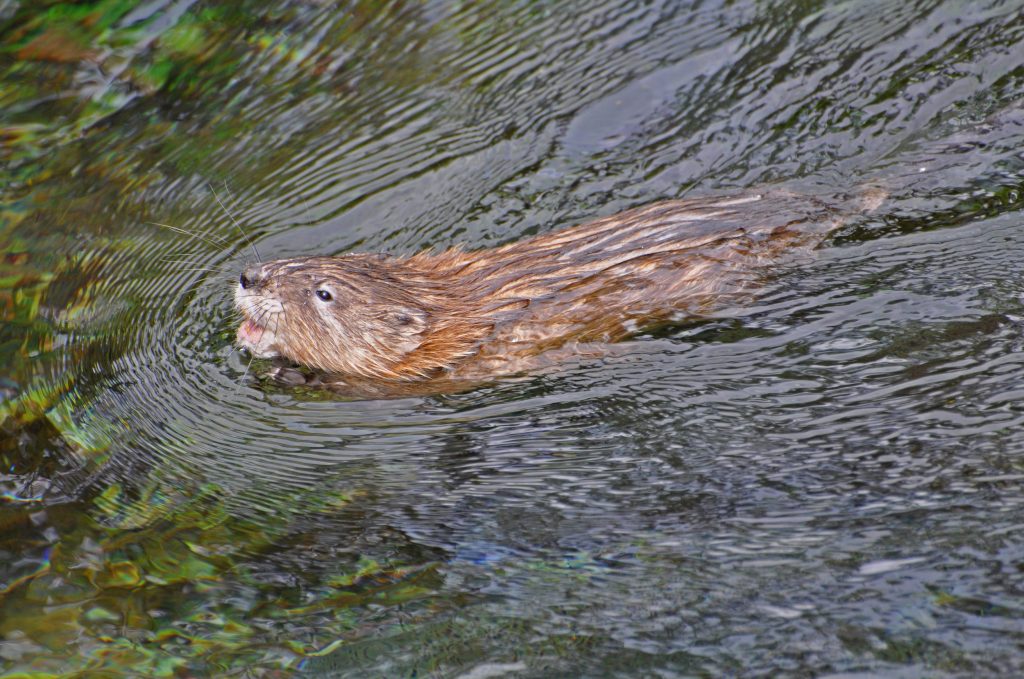



I have 3 that come out of the waterway to eat bird seed at the base of my feeder. They ate all the cattails..not sure if they eat the roots, but thats a bit disappointing. I love to watch them swim. I have mallard ducks that i throw cracked corn to in the water and the muskrats join in the feeding frenzy. Very cute to watch them.
What a wonderful little animal! Love all of the interesting factoids. Any day is a good day if you’re lucky enough to spot a smelly muskrat! Preserve and protect.